Disjointness¶
This tutorial is based off https://ontology101tutorial.readthedocs.io/en/latest/Disjointness.html Created by: Melissa Haendel, Chris Mungall, David Osumi-Sutherland, Matt Yoder, Carlo Torniai, and Simon Jupp
For this excercise, we will be using chromosome-parts-interim.owl file that can be found here
Disjointness¶
In the chromosome-parts-interim.owl file, at the top of our class hierarchy we have cell, cell part, chromosomal part, intracellular part, organelle and organelle part. By default, OWL assumes that these classes can overlap, i.e. there are individuals who can be instances of more than one of these classes. We want to create a restriction on our ontology that states these classes are different and that no individual can be a member of more than one of these classes. We can say this in OWL by creating a disjoint classes axiom.
If you do not already have it open, load your previous ontology that was derived from the 'interim file'. Note: you can open a recent file by going to File-> Open Recent
We want to assert that organelle and organelle part are disjoint. To do this first select the organelle class. In the class 'Description' view, scroll down and select the (+) button next to Disjoint With. You are presented with the now familiar window allowing you to select, or type, to choose a class. In the hierarchy panel, you can use CTRL to select multiple classes. Select 'organelle part' as disjoint with organelle.
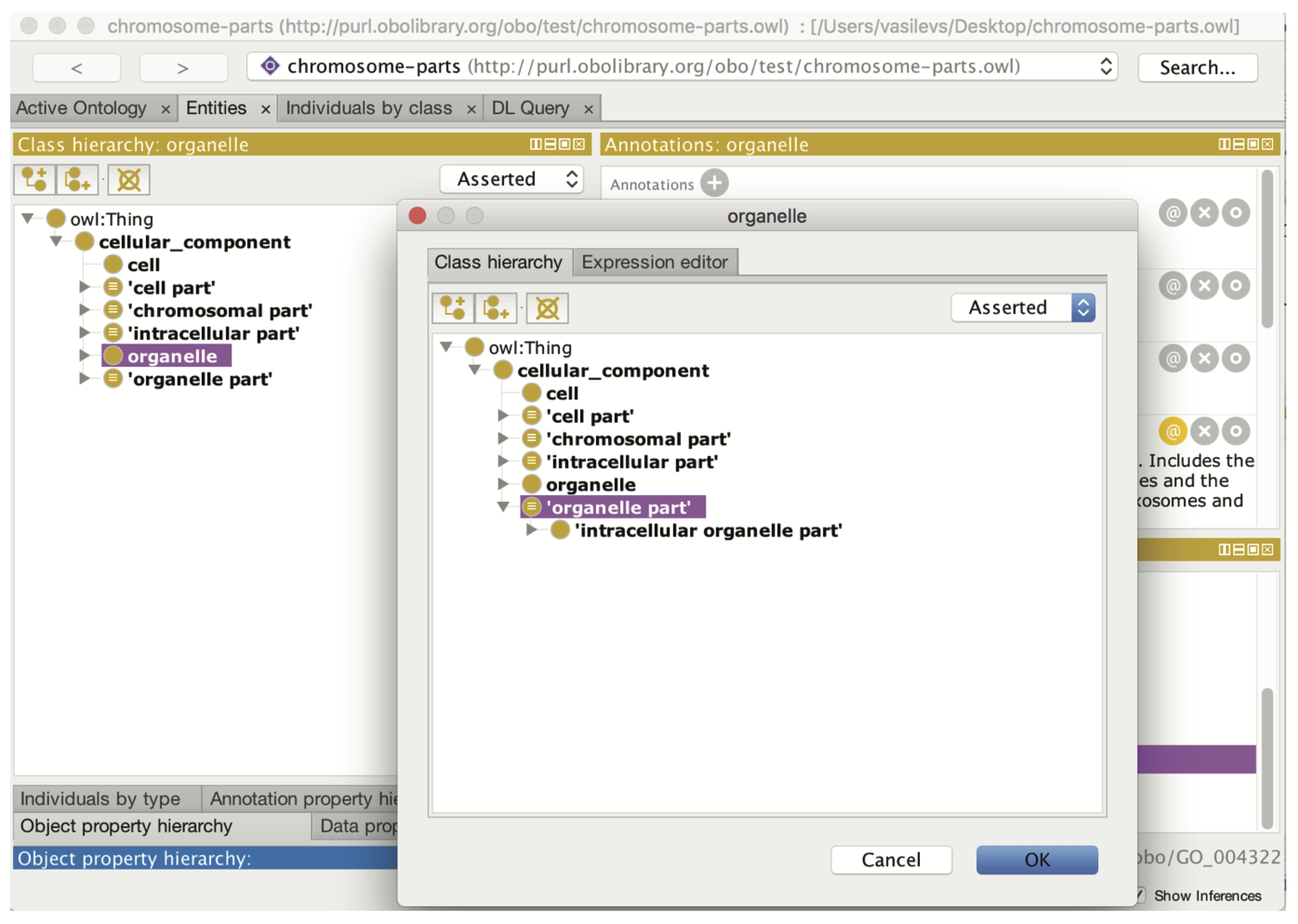
Note that the directionality is irrelevant. Prove this to yourself by deleting the disjoint axiom, and adding it back from organelle part.
Reasoning and inconsistency checking¶
We have introduced a deliberate mistake into the ontology. We previously asserted that intracellular organelle part is a subclass of both organelle part and organelle. We have now added an axiom stating that organelle and organelle part are disjoint. We can use the reasoner to check the consistency of our ontology. The reasoner should detect our contradiction.
Protégé comes with several reasoners, and more can be installed via the plugins mechanism (see plugins chapter). Select a reasoner from the Reasoner menu (Elk, HermiT, Pellet, or Fact++ will work - we mostly use ELK). Once a reasoner is highlighted, select 'Start reasoner' from the menu. Note: you may get several pop-boxes/warnings, ignore those.
The intracellular organelle part class will have changed to red indicating that the class is now unsatisfiable.
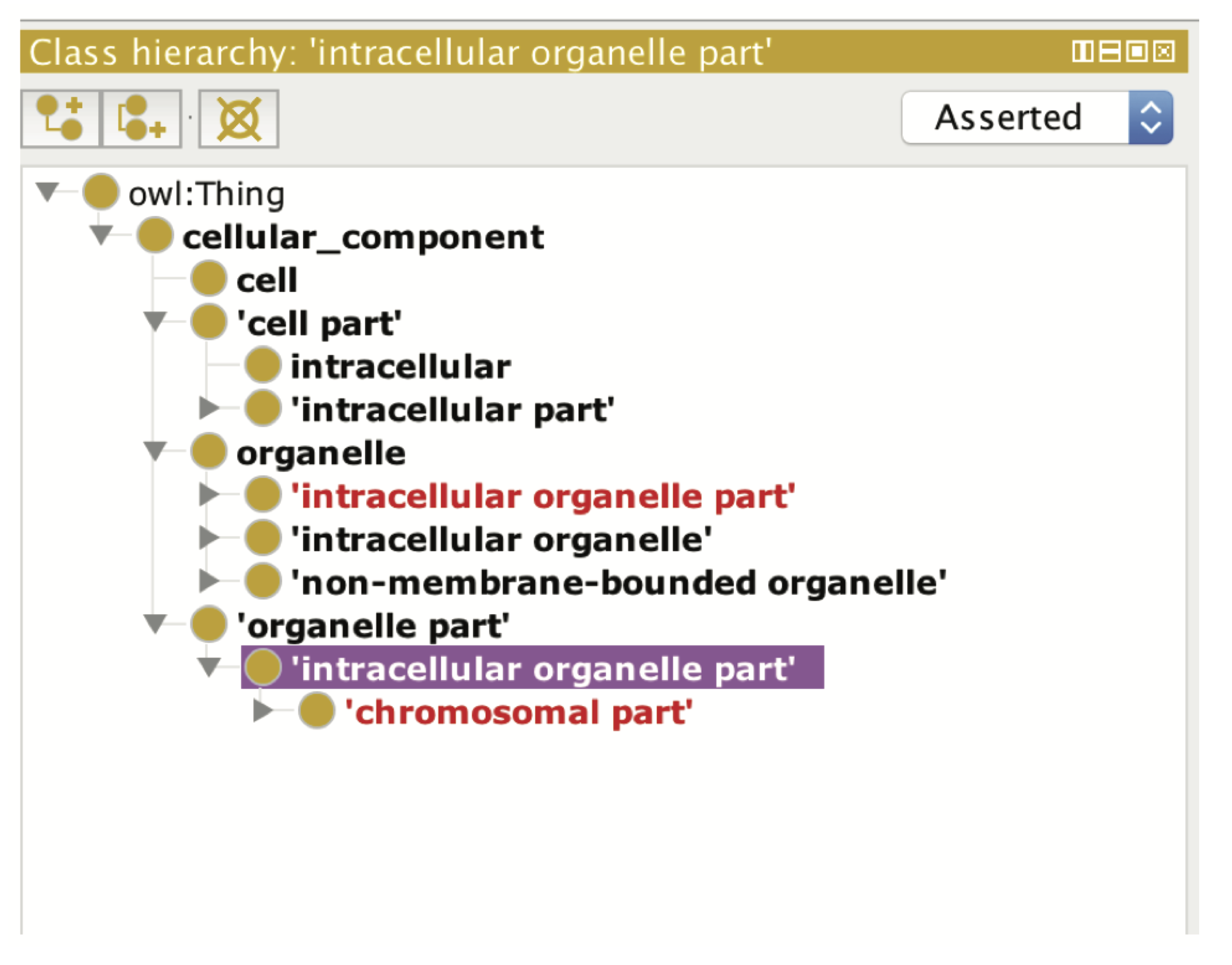
You can also see unsatisfiable classes by switching to the inferred view.
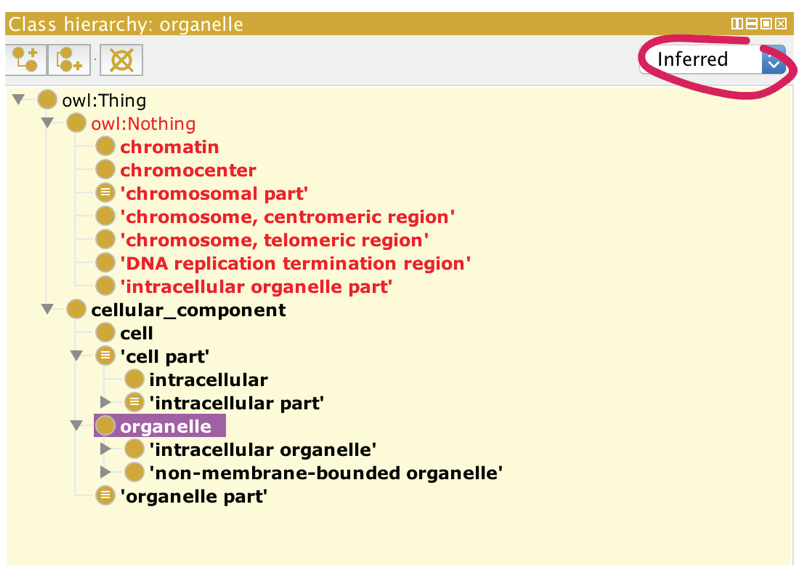
Here you will a special class called Nothing. When we previously said that all OWL classes are subclasses of OWL Thing. OWL Nothing is a leaf class or bottom class of your ontology. Any classes that are deemed unsatisfiable by the reasoner are shown as subclasses or equivalent to OWL Nothing. The inferred view will show you all subclasses of Nothing.
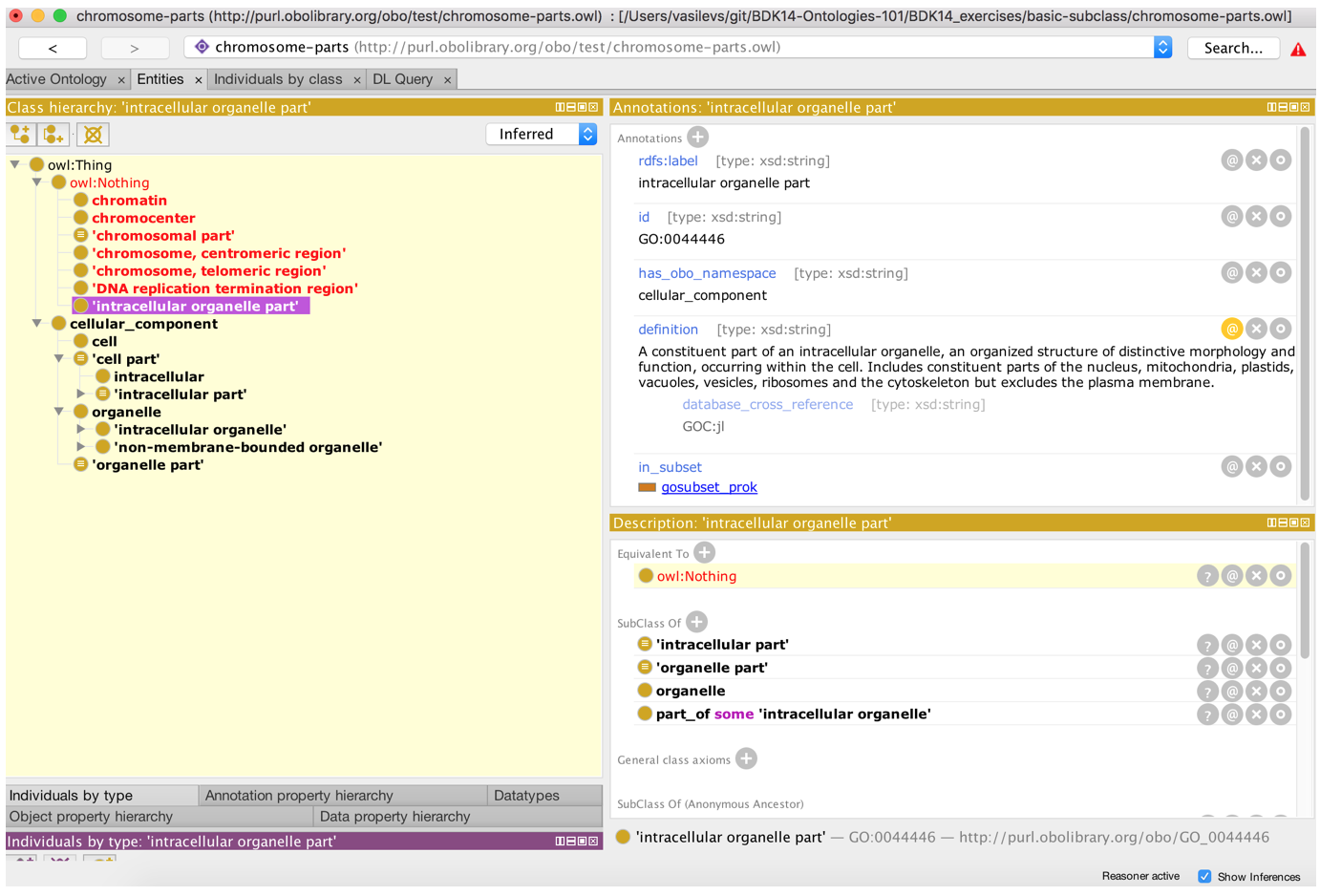
Once the ontology is classified, inferred statements or axioms are shown in the various panels with a light-yellow shading. The class description for intracellular organelle part should look something like the screen shot below. You will see that the class has been asserted equivalent to the Nothing class. Inside this statement, a small question mark icon appears, clicking this will get an explanation from the reasoner for this inconsistency.
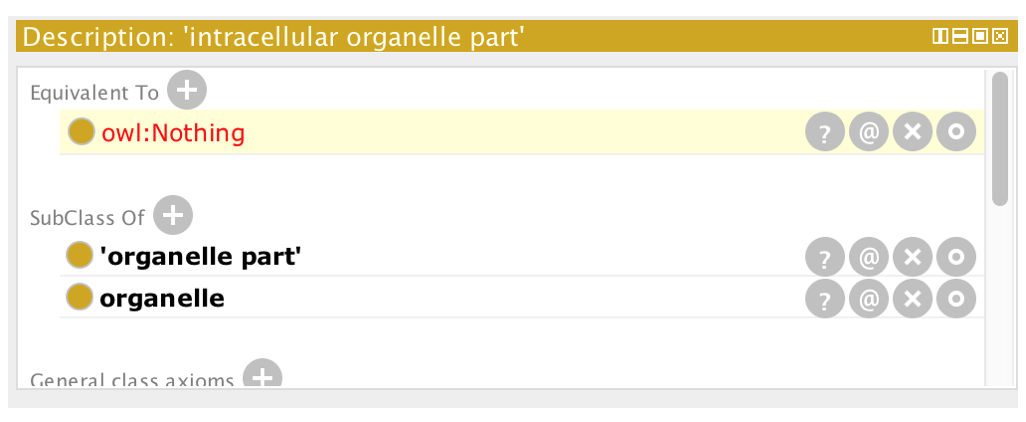
Select the (?) icon to get an explanation for this inconsistency. The explanation shows the axioms involved. We see the disjoint class axiom alongside the two subclass axioms are causing the inconsistency. We can simply repair this ontology by removing the intracellular organelle part subClassOf organelle axiom.
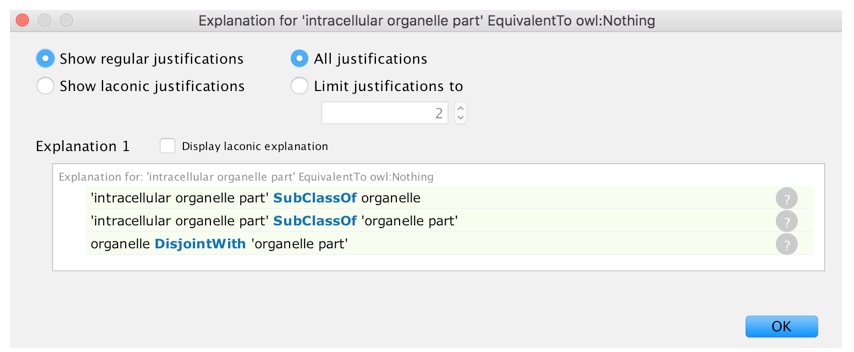
Remove the Disjoint with axiom (click the (x) beside organelle in the Description pane for intracellular organelle part), and resynchronise the reasoner from the reasoner menu.